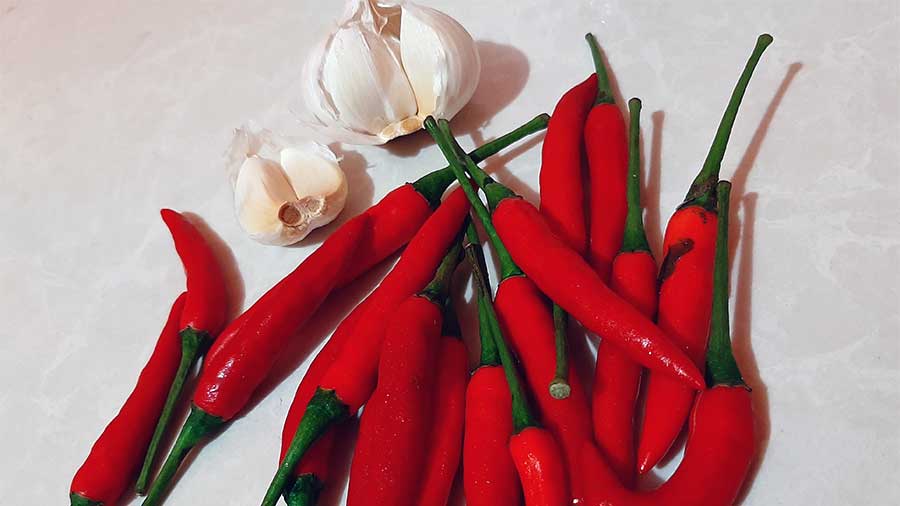In an earlier blog post, I wrote about how aphids were sucking the life out of my basil plants. That’s what aphids really do, they suck the sap and soft tissues of a plant. They can cause deformities in leaf growth and if you’re growing herbs, then it is really bad news. I am growing my basil, thyme, and sage at home so I can use the fresh leaves in the kitchen. The last thing I need is aphids destroying the leaf growth.
There are lots of homemade pesticides that are easy to make at home. But since I have some supply of chili and garlic in my refrigerator, I decided to make a chili garlic spray. This is the first time that I will be using this concoction so I tried to keep track of its effectiveness. I have tried using vinegar, dishwashing soap, oil, and a mixture called OHN (oriental herbal nutrients) before, and they have all worked for me wonderfully.
So how effective is the chili garlic pesticide spray? Using the chili garlic spray as a pesticide eradicates the aphid population after four applications. It is applied twice a week in the late afternoon just 1 hour before sunset. New, healthy leaves form in two weeks with no signs of deformities. Further spraying of the chili garlic pesticide, done once a week, prevents the aphids from coming back.
Why You Need to Get Rid of Aphids
Aphids are really tiny, but you’ll know they’re there through a sure warning sign. If ants are marching around new shoots, most of the time, they are there because of the aphids. Aphids provide the ants with food through their body secretions while the ants provide them protection. That’s how I found out these pesky aphids in my basil. Those ants bit me while I was harvesting some leaves.
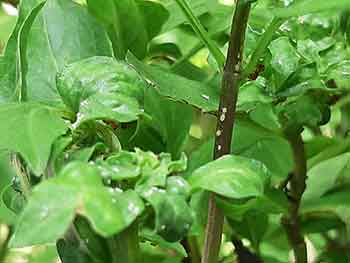
Aphids are usually white in color, sometimes transparent, and may appear greenish. You may just see a few of them clustered on the leaves, but upon closer inspection, a lot of these pests are hiding underneath the leaves. This is where they do their damage. They suck the nutrient-rich plant liquids. If this goes on for a long time, it will cause leaf deformation, withering, wilting, and eventually the death of the plant. If this is not prevented, they will spread to your other plants and it may be too late to stop them.
How to Make a Chili Garlic Pesticide Spray
I have seen many versions of this spray on the internet and they would have all probably work. However, I was not really able to read anything about the results after using the spray. So later on in this blog, I will post pictures of the effect of the chili garlic spray on my basil plants.
Here’s what you’ll need:
- 1 garlic bulb (roughly a dozen cloves)
- 50 grams (or about 20 pcs) chili pepper
- 1 tablespoon dishwashing liquid
- 1 liter water
For the chili, you may use any kind as long as it belongs in the “hot pepper” category such as cayenne.
Step 1. Remove the seeds from the chili pepper. Chop to tiny pieces.
You don’t really need the seeds in making the spray. After removing the seeds, you can plant them somewhere in your backyard so you’ll have plenty of supply in the future. They’re not really that hard to grow. You can just leave them alone and water them occasionally. You can chop to half-inch strips or even smaller. Just a tip in chopping off chili, always use gloves. The pungent smell of chili can stick to your fingers even after a week. You can still even feel the sting when you rub your eyes.
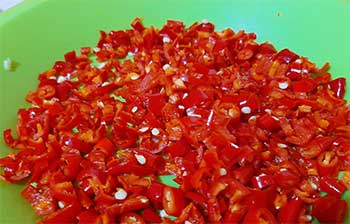
Step 2. Remove the skin from the garlic cloves.
The garlic skin also doubles as a good organic fertilizer. You can make it into a tea, which is really just letting it steep in water overnight. The garlic peel tea can then be used as a soil drench for your plants. For more details about garlic peel fertilizer, you can read about it here.
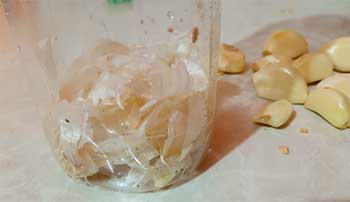

Step 3. Chop garlic into tiny pieces.
By chopping it into tiny pieces, you can increase the overall surface area so more garlic components can be extracted later. Most bugs are known to hate the smell of garlic. It is a really effective insect and pest repellant.
Step 4. Place the chopped chili and garlic into a clean container.
You can use any plastic or glass container. Be sure that the container can be sealed properly.
Step 5. Add 1 tablespoon dishwashing soap.
The dishwashing soap binds all components together. Soap also coats the body of the aphids which removes the wax covering it. When the wax is washed out, the aphids will suffer from dehydration.
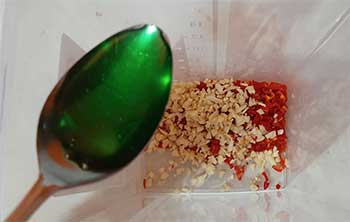
Step 6. Add 1 liter water. Let it sit overnight.
You can use tap water. Mix thoroughly. Seal it properly to prevent contamination. When you soak the chili and garlic in water, you are steeping it. Steeping is the process of extracting the nutrients, compounds, and other properties of organic solids.
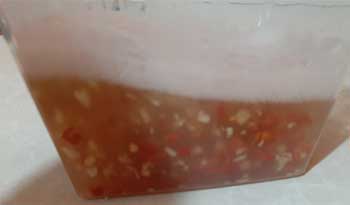
Applying the Chili Garlic Spray
The mixture is quite strong and it may cause leaf “burn”. The trick is to spray it in the late afternoon, around 1 hour before sunset. The heat from the direct sunlight is what causes the burn, so you would want to avoid that. Apply the spray twice a week.
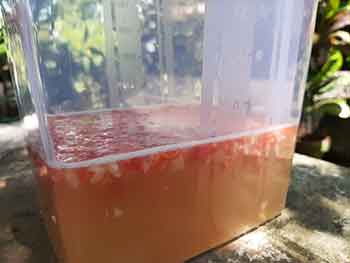
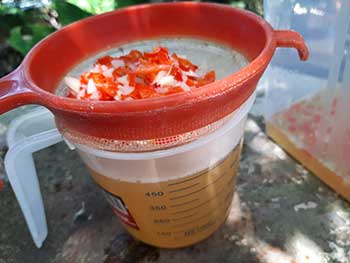
In my experience, after the first spray, it was as if nothing happened. When I went to check the infected plants in the morning, the aphids were still there and so with the ants. I went to check again in the afternoon and they were still there. I thought maybe the second spray will do it.
After three days, I sprayed again and hoped that they will be gone in the morning. Yet, I was disappointed again as the aphids were still lurking. I even checked the underside of the leaves and yes, the tiny white spots were still there. I think I know why they are still around.
The Residual Action of Chili Garlic Spray
Organic pesticides such as the chili garlic spray have a short residual action. Meaning, the potency of the spray diminishes in just a day or two. So, when you use organic pesticides, you’ll just have to be patient.
When I sprayed again for the third time (which is now in the second week), I have now seen some effect. The aphid population decreased. Ant activity seemed to lessen. When I sprayed again after three days, I noticed the growth of new leaves. And unlike the leaves before which were deformed and curled, the new leaves were healthy.
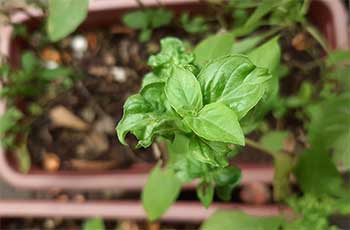
By the third week, the aphids, along with the ants, were completely gone.
I made another batch of chili garlic spray which I will use as a preventive measure. So far, after a month, there were no signs of aphids.


